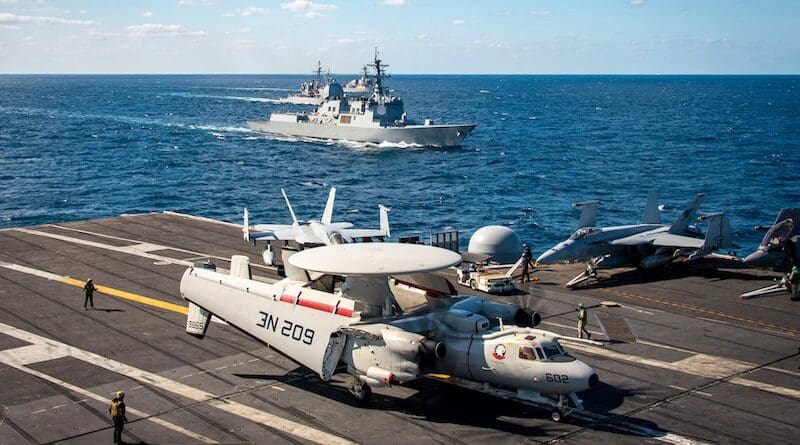DOD’s Ratner Describes Strategy Driven Changes In Indo-Pacific
By DoD News
By Jim Garamone
In only two years, U.S. officials have made many positive inroads with allies and partners throughout the Indo-Pacific.
Ely Ratner, the assistant secretary of defense for Indo-Pacific security affairs, shared his thoughts on the second anniversary of the Indo-Pacific strategy during a presentation at the U.S. Institute of Peace in Washington, yesterday. He spoke alongside representatives from the White House and State Department, illustrating the whole-of-government approach of the strategy.
The Indo-Pacific Strategy is an outgrowth of President Joe Biden’s National Security Strategy, which spawned the National Defense Strategy. That strategy says China is America’s pacing challenge and recognizes that China is the only nation with the will and, increasingly, the capabilities to overturn the rules-based international order that has kept peace between great powers since the end of World War II.
Ratner said the strategy is all about “a shared vision that we have with our allies and partners. I think the degree of strategic alignment between the United States and our major allies and partners … throughout the Indo-Pacific is unprecedented.”
In two short years, the Defense portion of the strategy has meant a more capable force, being more forward positioned and working more closely with allies and partners, Ratner said.
Ratner pointed to the Quad partnership among Australia, India, Japan and the United States as an example of the ways nations are working together. He specifically mentioned the Quad is delivering greater maritime domain awareness.
He also spoke of the growth in partnership with India. Both nations have accelerated integration in the defense industrial sector. “We’ve been working very intensely with the Indian government on their efforts to deepen their indigenous, defense industrial base through some really exciting co-production, co-development opportunities in areas such as jet fighter engines and armored vehicles,” he said.
Ratner also spoke of the Australia, United Kingdom and United States trilateral agreement, known as AUKUS, and what it will mean with Australia developing conventionally armed, nuclear-powered submarine capability. The agreement will also mean the three nations will work on other cutting-edge military capabilities.
On the practical side, the United States is bringing more capability and capacity to the region with our allies and partners, and American forces are positioned forward and are more mobile and distributed, Ratner said. “2023 stood as the most transformative year in our regional force posture in a generation,” he said. “And there’s more to come in the years ahead.”
DOD officials are reaching out to allies and partners in the region, working to build capabilities, and conducting exercises with nations. This builds ties between like-minded nations.
More must be done, Ratner said. The most immediate is to secure Compact of Free Association funds from Congress. These are compacts between the United States and the Federated States of Micronesia, the Republic of the Marshall Islands and the Republic of Palau. State Department officials have negotiated an agreement with these nations that will go through 2043. Total U.S. funding for the agreements is $7.1 billion. “Securing COFA funding is one of the most important things that the administration can do this year in terms of our Indo-Pacific strategy,” Ratner said.
The island states are strategic territory giving the U.S. “assured access” in the region, the assistant secretary said.
A large number of islanders serve in the U.S. military. “It’s something where there is strong bipartisan support,” he said. “This is an opportunity for Congress [and] the administration to work together this year. And we just have to get it done.”
The U.S. military in the region is working in many new ways with allies and partners, Ratner said. “We’re going to have to deliver on AUKUS in 2024,” he said. “We’re going to have to keep delivering on the force posture front again. We’ve got lots of successes to talk about, but we’ve got to roll up our sleeves and keep at it this year.”

